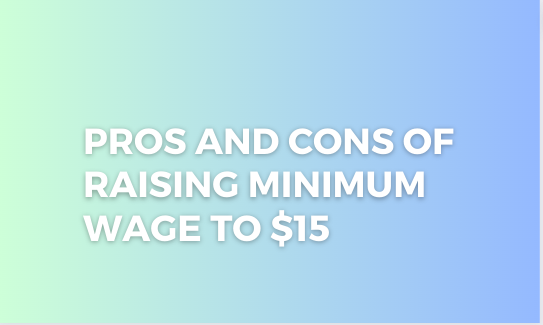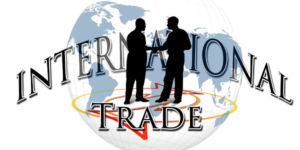Raising the minimum wage to $15 has been a topic of debate and discussion in many countries. Supporters argue that it can improve the standard of living for low-wage workers, while opponents express concerns about its potential impact on businesses and employment. Below are 40 pros and cons of raising the minimum wage to $15, each explained in one sentence.
Pros:
- Improved income for low-wage workers: Raising the minimum wage to $15 can help lift low-wage workers out of poverty and improve their overall financial well-being.
- Reduced income inequality: Increasing the minimum wage can help address income inequality by narrowing the gap between low-wage workers and higher-income individuals.
- Boost to consumer spending: Higher wages for low-income workers can stimulate consumer spending, supporting local businesses and the economy.
- Reduced reliance on public assistance: With a higher minimum wage, fewer workers may need to rely on public assistance programs, reducing the burden on social welfare systems.
- Enhanced worker productivity: When workers earn a living wage, they are more motivated and productive, benefiting employers and businesses.
- Reduced turnover and training costs: Higher wages can incentivize workers to stay in their jobs longer, reducing turnover rates and associated training expenses.
- Improved job satisfaction: A higher minimum wage can lead to greater job satisfaction among low-wage workers, resulting in higher morale and productivity.
- Addressing the cost of living: Raising the minimum wage helps workers keep pace with the rising cost of living, especially in areas with high living expenses.
- Potential reduction in income inequality among racial and gender groups: Raising the minimum wage can help address disparities in wages among different racial and gender groups.
- Positive impact on public health: Higher wages can lead to better access to healthcare, improved mental health, and reduced stress-related illnesses.
- Stimulus for small businesses: Increased consumer spending from higher wages can benefit small businesses by boosting demand for their products and services.
- Reduced employee turnover: Higher wages can incentivize workers to stay in their current jobs, reducing recruitment and training costs for businesses.
- Support for working families: Raising the minimum wage can provide working families with greater financial stability and the ability to meet basic needs.
- Promotes fair labor practices: Increasing the minimum wage aligns with the principle of fair compensation for work and recognizes the dignity of labor.
- Economic multiplier effect: Higher wages can circulate through the economy, creating a multiplier effect as increased consumer spending generates more business revenue and job opportunities.
- Reduced income inequality across generations: A higher minimum wage can help bridge the income gap between younger workers and older generations.
- Reduced poverty rates: Raising the minimum wage can contribute to a reduction in poverty rates by lifting low-wage workers above the poverty line.
- Improved social mobility: Higher wages can provide opportunities for upward mobility and allow workers to escape the cycle of poverty.
- Addressing wage stagnation: Raising the minimum wage can help combat long-standing wage stagnation issues, ensuring workers’ earnings keep up with economic growth.
- Positive impact on the local community: Higher wages can lead to stronger communities with reduced poverty rates and increased economic vitality.
Cons:
- Impact on small businesses: Small businesses, especially those with narrow profit margins, may struggle to absorb the increased labor costs associated with a higher minimum wage.
- Potential job losses: Some businesses may be unable to afford the higher labor costs and may resort to reducing their workforce or cutting employees’ hours.
- Impact on low-skilled workers: A higher minimum wage may make it more difficult for low-skilled or entry-level workers to find employment.
- Inflationary pressure: Increasing the minimum wage can contribute to higher inflation rates as businesses pass on the increased labor costs to consumers.
- Potential for automation: Businesses may opt for automation or technological solutions to replace low-wage workers, reducing overall job opportunities.
- Reduced hours or benefits: Employers may cut back on employee hours or reduce non-wage benefits to offset the higher labor costs.
- Potential business closures: Some businesses, particularly those already facing financial challenges, may be forced to close if they cannot sustain the increased labor costs.
- Impact on price of goods and services: Businesses may pass on the higher labor costs to consumers, resulting in increased prices for goods and services.
- Regional economic disparities: A uniform minimum wage may not account for regional variations in living costs, potentially exacerbating economic disparities across different areas.
- Impact on non-profit organizations: Non-profit organizations heavily reliant on low-wage workers may struggle to meet the higher wage requirements, affecting their operations and services.
- Discouraging workforce participation: Higher minimum wages may discourage some individuals from seeking employment or incentivize early retirement.
- Impact on youth employment: Raising the minimum wage may make it more challenging for young and inexperienced workers to find employment opportunities.
- Disincentive for skill development: A higher minimum wage may discourage workers from investing in skill development and education, as they may find low-wage jobs more financially attractive.
- Potential for reduced work hours flexibility: Employers may offer fewer flexible work arrangements or part-time positions to accommodate the increased labor costs.
- Challenges for certain industries: Industries with high labor-intensive operations, such as agriculture or hospitality, may face significant difficulties adapting to higher minimum wages.
- Impact on competitiveness: Businesses in countries with higher minimum wages may face challenges competing with businesses in countries with lower labor costs.
- Unintended consequences on income distribution: A higher minimum wage may not necessarily benefit the most vulnerable workers, as it can lead to changes in wage structures and distribution.
- Disruption for small-scale contractors and freelancers: Independent contractors and freelancers may face challenges as businesses try to reduce labor costs by outsourcing or hiring fewer workers.
- Increased reliance on technology: Businesses may expedite the adoption of technology or AI solutions to replace human workers, reducing employment opportunities.
- Potential for a skills gap: Higher minimum wages may discourage workers from pursuing higher education or acquiring advanced skills, resulting in a potential skills gap in the labor market.
Pros
- Improved income for low-wage workers
- Reduced income inequality
- Boost to consumer spending
- Reduced reliance on public assistance
- Enhanced worker productivity
- Reduced turnover and training costs
- Improved job satisfaction
- Addressing the cost of living
- Potential reduction in income inequality among racial and gender groups
- Positive impact on public health
- Stimulus for small businesses
- Reduced employee turnover
- Support for working families
- Promotes fair labor practices
- Economic multiplier effect
- Reduced income inequality across generations
- Reduced poverty rates
- Improved social mobility
- Addressing wage stagnation
- Positive impact on the local community
Cons
- Impact on small businesses
- Potential job losses
- Impact on low-skilled workers
- Inflationary pressure
- Potential for automation
- Reduced hours or benefits
- Potential business closures
- Impact on price of goods and services
- Regional economic disparities
- Impact on non-profit organizations
- Discouraging workforce participation
- Impact on youth employment
- Disincentive for skill development
- Potential for reduced work hours flexibility
- Challenges for certain industries
- Impact on competitiveness
- Unintended consequences on income distribution
- Disruption for small-scale contractors and freelancers
- Increased reliance on technology
- Potential for a skills gap



